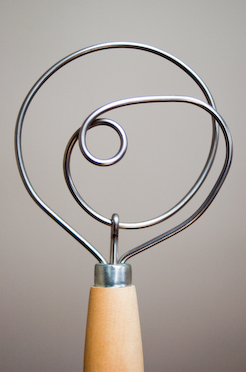Or, rather, without the flimsy semi-transparent bag with handles that cut into your hands like cheesewire if you put something in the bag that weighs more than a pound? Here in Ireland, it’s been a pleasure.
I see the concept of dumping the bag — by one mechanism or another — is being introduced in Los Angeles County now. (See this editorial at the LA Times for some details. Malibu has already brought in legislation, and I think so has San Francisco.) I see also that the normal kicking and screaming at the very concept is already ongoing — there’s actually a website called SaveThePlasticBag.com: glancing over it makes me vaguely curious to see who’s actually behind the Save The Plastic Bag Coalition, but not so curious that I’d veer off course to do anything about it on a work day. (ETA: It’s paid for by plastic bag manufacturers: scroll down in the article for confirmation.)
I wouldn’t presume to dictate to people who live in a place where I no longer reside. But I can say this for sure: after the Irish dump-the-bag initiative went into action in 2002, the urban, suburban and rural Irish landscape got visibly cleaner within a matter of just a few months. Now, in terms of bags at least, both countryside and cityscapes here are unthinkably different from the way they looked looked a relatively short time ago. Not pristine, by any means. There are still a lot of Irish who’re slobs (though slowly this seems to be changing). But a main cause of litter and secondary pollution is now gone.
Five years ago, in a country that’s supposed to be famous for the beauty of its landscape and environment, you would have found it impossible to locate a country hedgerow that did not have the dirty, tattered remains of plastic bags snarled in it, fluttering in the breeze. I can’t describe how horrendous this looked. Fences were festooned with the filthy things; they were caught in trees, lay clogging roadside ditches, went blowing down every country road until they wound up in your back yard or your garden. (City streets and roads were far worse in this regard.) Sewers overflowed after getting full of them, seabirds and other wildlife got strangled by them either externally or by ripping them up and eating them; they covered the bottoms of ponds and could be found half-buried in wetlands and mired in protected peat bogs. The damn things were everywhere.
Part of the reason this happened, I believe, is because the bags were free: and as about almost any other free thing, people just got unconscious about the plastic bags and what was done with them. They didn’t matter.
Finally the government got off its butt and did something. And they did it in a very smart way: by making the bags matter. They didn’t outright ban them. They just said, “Okay, if you want them, you can have them. But you’ll have to pay for them. Not a crippling amount: just enough to concentrate your mind on the issue of whether you really need them or not.” The charge was, as I remember, 15 cent. (Now it’s thirty-three.)
At the same time, all the major and minor grocery chains started offering more durable bags at the checkouts. They too cost money — ranging from a Euro to several Euro depending on how big the bag was — but anyone who stood at the checkout and did the math in their head quickly realized how much money they were going to save on the reusable bags.
Peter and I were really interested to see how this was going to go. We’d already been converted to the reusable-bag concept years earlier during various trips to Germany and Switzerland, where sturdy inexpensive cloth, paper and reusable plastic bags have been on sale at the checkout for a long time. (These are also countries where you will genuinely still see people carrying their shopping around the local city markets in wicker baskets, some even with gingham linings.) We had about ten or fifteen of these strong cloth bags in the kitchen closet already. So as our local groceries started featuring the new cloth or plastic-weave bags, naturally we picked up some in the course of business. But I was particularly interested in seeing how our neighbors would take the changeover.
I was astonished to see that almost without exception, all the people in our immediate neighborhood went practically immediately to the position, “Sure I’d sooner pay for a good bag once than pay for those cheap things every week, they just pile up and make a mess: what’s the problem?” It seems that the rest of the country went pretty much the same way: the Times article suggests that the use of disposable plastic bags dropped off by 94% “within weeks”. And this among a people who are notoriously conservative about a lot of things.
But now we have clean fields and woods and hedgerows… and significantly less litter and damage to something that’s unquestionably a national resource: the Irish landscape. As well as far less sheer waste of something that (leaving aside the issue of other environmental impact) is better not made and thrown away thoughtlessly than made and casually ditched.
So now it’ll be interesting to see what happens in LA. (It looks like IKEA’s unilateral bag fee is producing results similar to the Irish national figures.)
But meanwhile I note this page at the aforementioned save-the-plastic-bag site:
We are a California-based coalition. The initial focus of our campaign is California. However, the anti-plastic bag campaign is a worldwide problem and we want to be as helpful as we can regardless of location.
(snort) Guys, three(ish) words for you as regards Ireland, at least: BUTT OUT KTHXBYE.



 If any of you are located in the area and feel inclined to drop by, we’d love to see you.
If any of you are located in the area and feel inclined to drop by, we’d love to see you.
